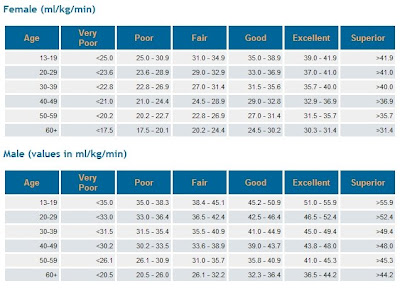Now a little bit of cellular respiration review:
Both these two processes require glycolysis, which is the conversion of glucose (stored sugar) into fuel. Aerobic is able to use oxygen to break down the glucose, allowing it to yield greater amounts of ATP (energy). Anerobic on the other hand uses other, less efficient but faster mechanisms. As a result, anaerobic glycolysis cannot be used for more than a few minutes, and is usually only relied on for sprints or such exercises. Therefore, aerobic exercise is the way to go for long term exercise.
Simply put,
AEROBIC EXERCISE = ENDURANCE
To build endurance, you need to train. We are all born with a certain level of innate endurance capacity. This is called the VO2 max, maximal oxygen consumption. It is the physical fitness indicator of each person where it measures the greatest capacity of oxygen a person can intake and distribute to working muscles.
You can improve your VO2 max with cardio exercise. Running, biking, swimming, etc. are all great for pushing your lung capacity and working your lungs to be more efficient with bringing oxygen to all parts of your body.
Measuring your VO2 max: *Beware it's a complicated formula*
VO2 max = 100.5 - 0.1636 (Your body weight in kilograms) - 1.438 ( Your mile time) - 0.1928 (your resting heart rate) + 8.344 (1 if you're a man; 0 if you're a woman)
Calculate it, and see where you stand! For comparison purposes, look at this chart:
 |
| http://michaelsleen.blogspot.com/2008/12/vo2-max.html |
No comments:
Post a Comment